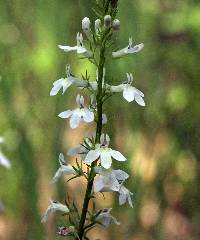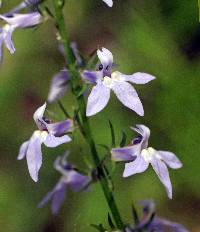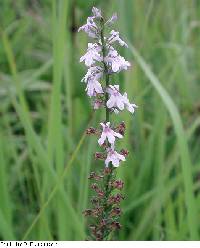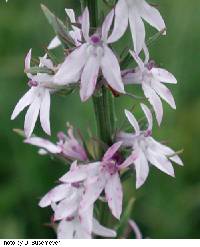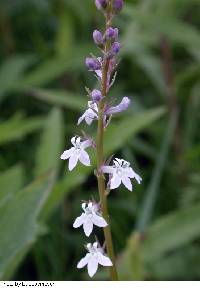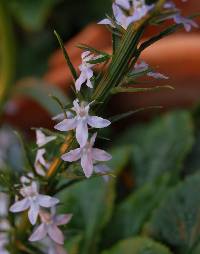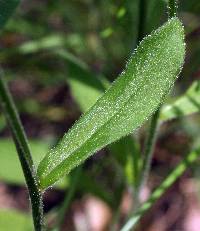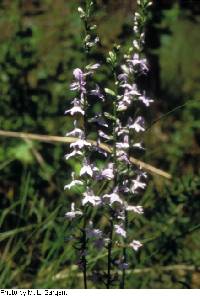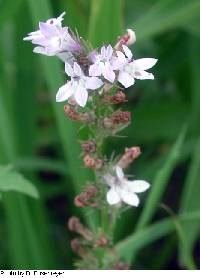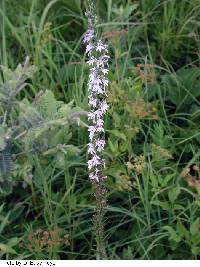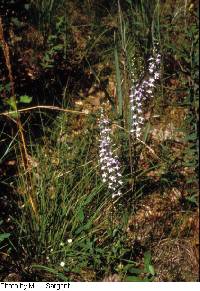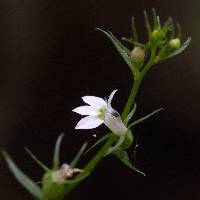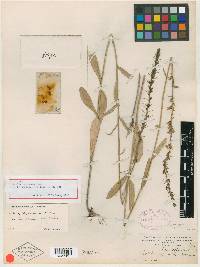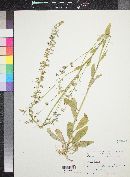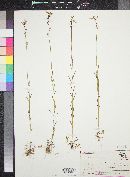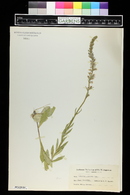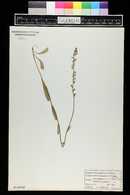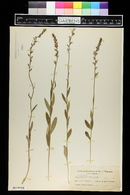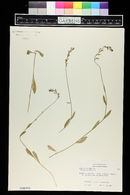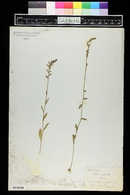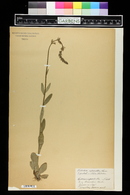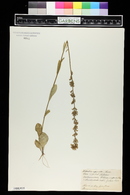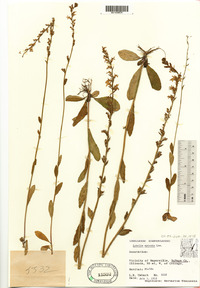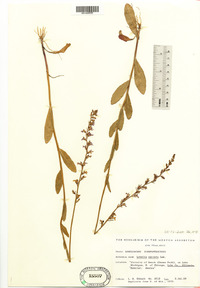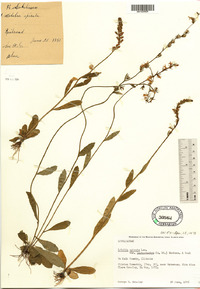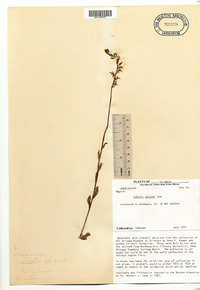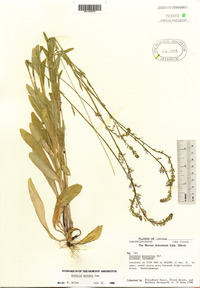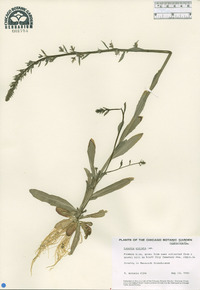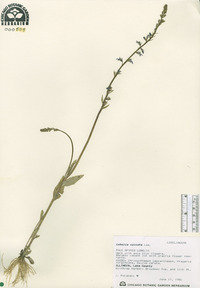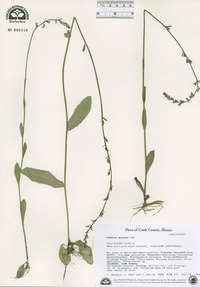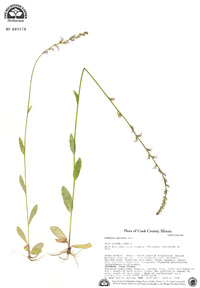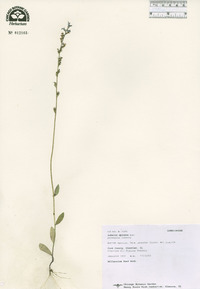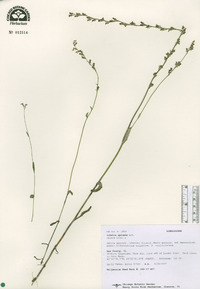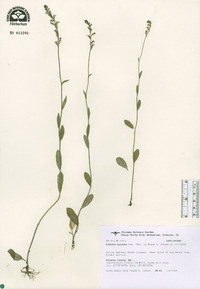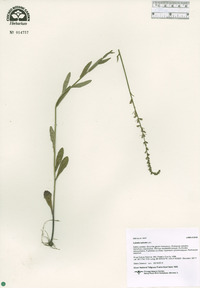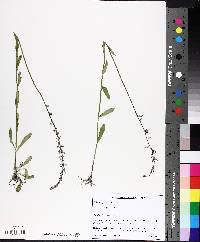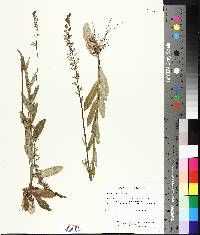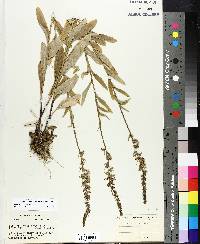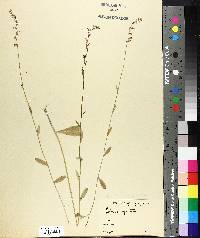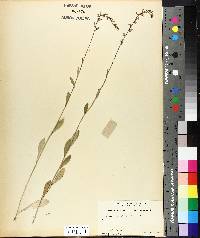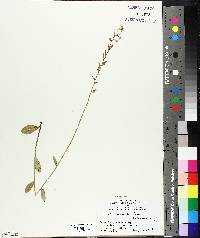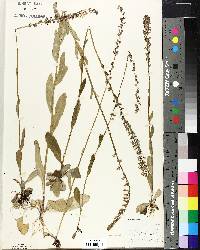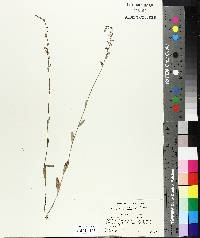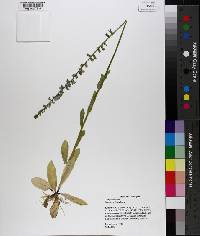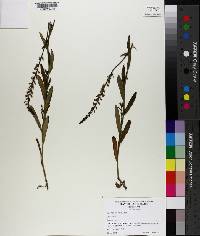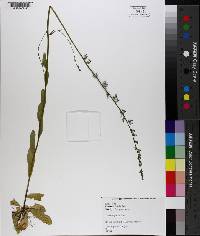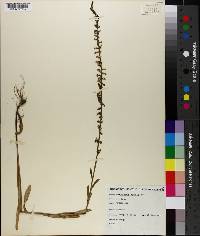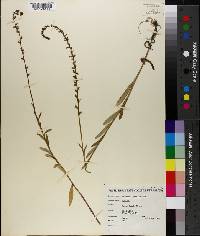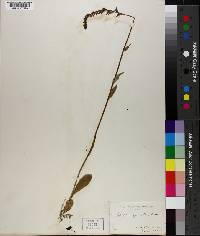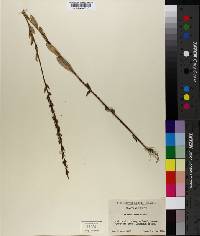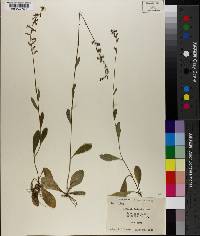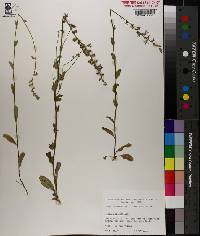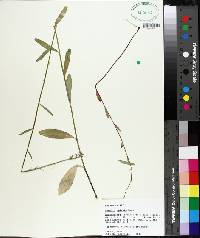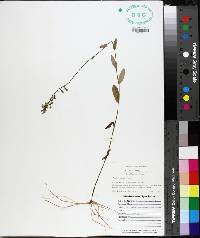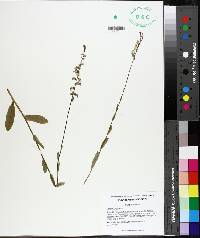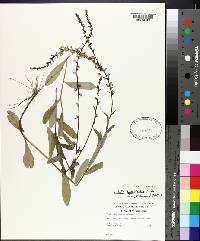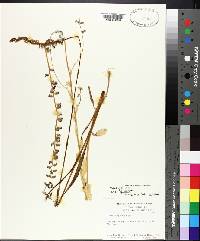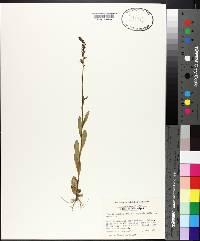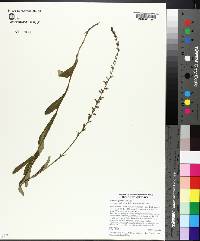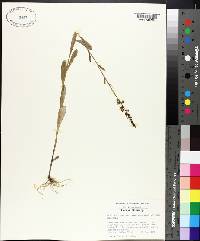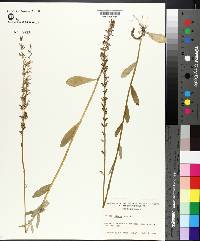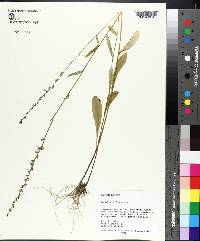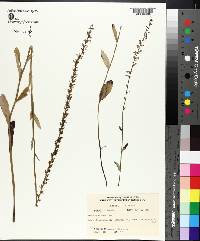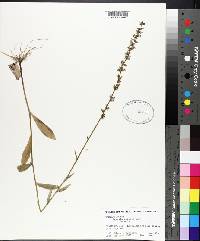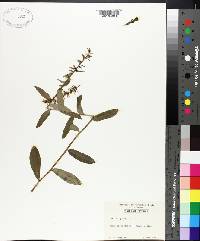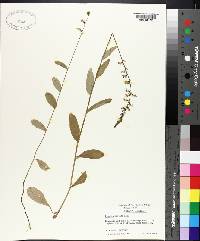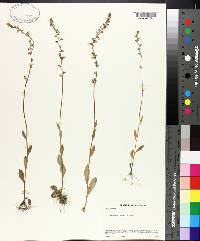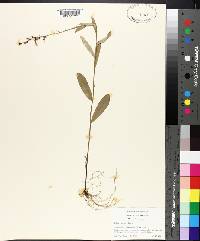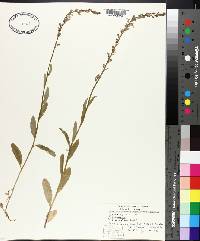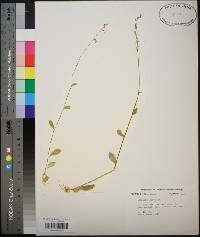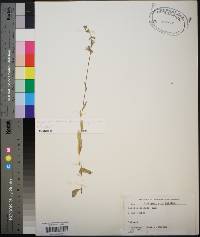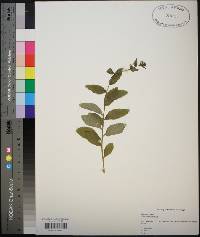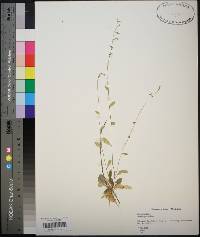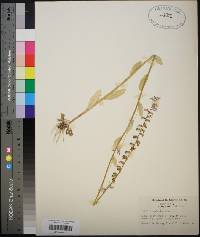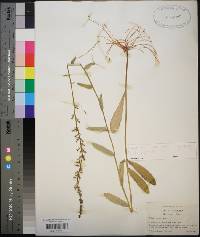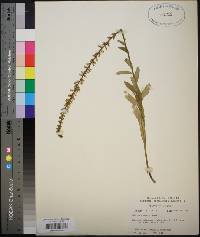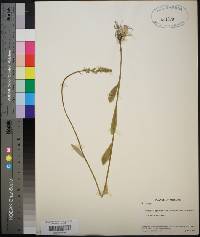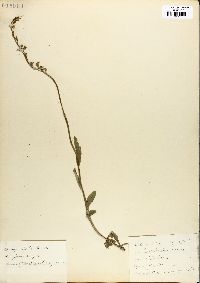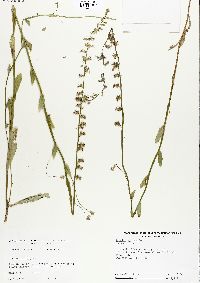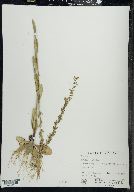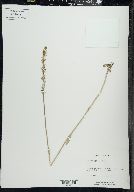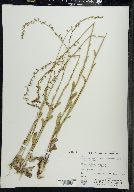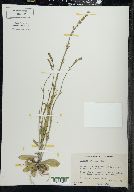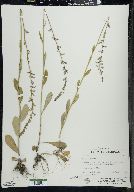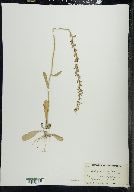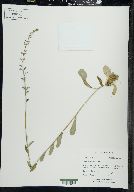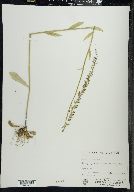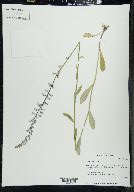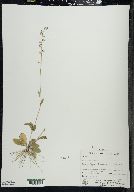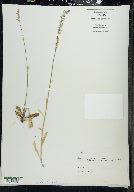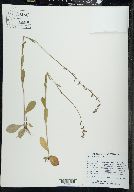Lobelia spicata
|
|
|
|
Family: Campanulaceae
Pale-Spike Lobelia, more...palespike lobelia
[Lobelia bracteata Small, moreLobelia claytoniana Michx., Lobelia pallida Muhl.] |
Perennial herb 30 cm - 1 m tall Stem: unbranched, erect, usually densely short-hairy at base (hairs under 0.6 mm) and becoming less hairy (or even patterned into thin lines) upwards. The character of stem hairiness differs between varieties. Inflorescence: a single, terminal, unbranched, slender, very tall (more than 30 cm), dense, spike-like cluster of flowers, each on short (2 - 5 mm) hairy stalks in axils of hairless, lance-shaped or linear bracts. Aside from the narrow subtending bracts, each flower stalk has two, tiny bracts (bracteoles) at their base. Flowers: pale blue to white, 0.7 - 1.1 cm long, bilaterally symmetric, with two-lobed upper lip and three-lobed lower lip. The flowers are actually flipped upside down so that the morphologic upper lip (of three spreading lobes) appears on the bottom of the flower, and the two shorter and erect lobes at the top of the flower are actually the morphologic lower lip. Sepals: five, but fused at very base, then separating into five, long (over twice length of tube), narrowly lance-shaped lobes, which may have ear-like appendages (auricles) between lobe bases. The hairiness of the sepal lobes as well as the size and shape of the alternating auricles differ between varieties. Petals: five, but fused at base into a tube, then separating into two lips. The "upper" lip (morphologic lower) has two, erect, narrow lobes with a beard of hairs near their base, while the "lower" lip (morphologic upper) has three, much wider, elliptic, pointed-tipped, spreading lobes. Stamens: five, but fused into a tube with pale blue-gray fused anthers, two of which are bearded at tip and shorter than other three. Pistil: with a two-chambered, inferior ovary; one long style positioned through center of stamen tube; and a two-lobed, often fringed stigma. As the style elongates up through the stamen tube, it pushes the pollen out of the anthers. Fruit: several, two-chambered, short, hemispherical, many-seeded capsules, which open at top. The united portions of the sepals and petals enclose the capsule and may become slightly inflated (or not) as the fruit matures. Basal leaves: if present, ascending, short-stalked, appressed-hairy, toothed or non-toothed, 5 - 10 cm long, broadly oblong to oval or spoon-shaped, several times longer than wide, widest above middle, and narrowed at base into stalk. Stem leaves: alternate, normally spreading to ascending (appressed in one variety), stalkless, sometimes hairy, inversely egg-shaped to elliptic, narrowed at base with some basal leaf tissue continuing onto stem (decurrent). The leaves become smaller upwards and eventually reduce to bracts. Similar species: Small plants of Lobelia spicata may be confused with L. kalmii, but that species has linear and hairless stem leaves, the bracteoles are located near the middle of the flower stalk, and the sepal lobes are usually shorter than twice the tube length. Another species this could be confused with is L. inflata, but that species usually has stem leaves that are widest near the base, the inflorescence is branched, there are no auricles on the sepal tube, and the tissue around the fruit is greatly inflated. There are three varieties of L. spicata in the Chicago Region, the typical variety L. spicata var. spicata, L. spicata var. hirtella, and L. spicata var. leptostachys. Lobelia spicata var. hirtella differs by being smaller overall, and rough-hairy throughout, including on the inflorescence bracts and sepal lobes. Lobelia spicata var. leptostachys differs by having appressed leaves, and obvious (normally over 1 mm long), deflexed and thin ear-like appendages (auricles) between the sepal lobes. Flowering: May to August Habitat and ecology: Occasional in the Chicago Region, mostly found in prairies, sometimes in low prairies and prairie fens. Occurence in the Chicago region: native Notes: Represented as three varieties in our area, L. spicata has four varieties within the eastern United States (Gleason and Cronquist 1991). There is some question as to how variable these entities are and whether they merit varietal designation. Author: The Field Museum Perennial 3-10 dm, simple, often hairy, especially below; lvs ascending, obovate to oblanceolate or lanceolate, 5-10 cm, hairy, the upper gradually reduced to bracts; raceme slender, crowded; bracts lanceolate to linear; pedicels 2-5 mm, bibracteolate at base; hypanthium short, obconic, this and the narrowly lanceolate sep smooth or hirtellous, the sep often with conspicuous reflexed basal auricles; cor blue to white, 7-11 mm, the lower lip bearded at base within; 2n=14. Various habitats, often weedy; Que. and N.S. to Minn., s. to Ga. and Ark. Four vars. Gleason, Henry A. & Cronquist, Arthur J. 1991. Manual of vascular plants of northeastern United States and adjacent Canada. lxxv + 910 pp. ©The New York Botanical Garden. All rights reserved. Used by permission. |
|
|
|


